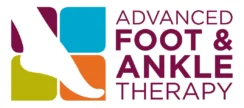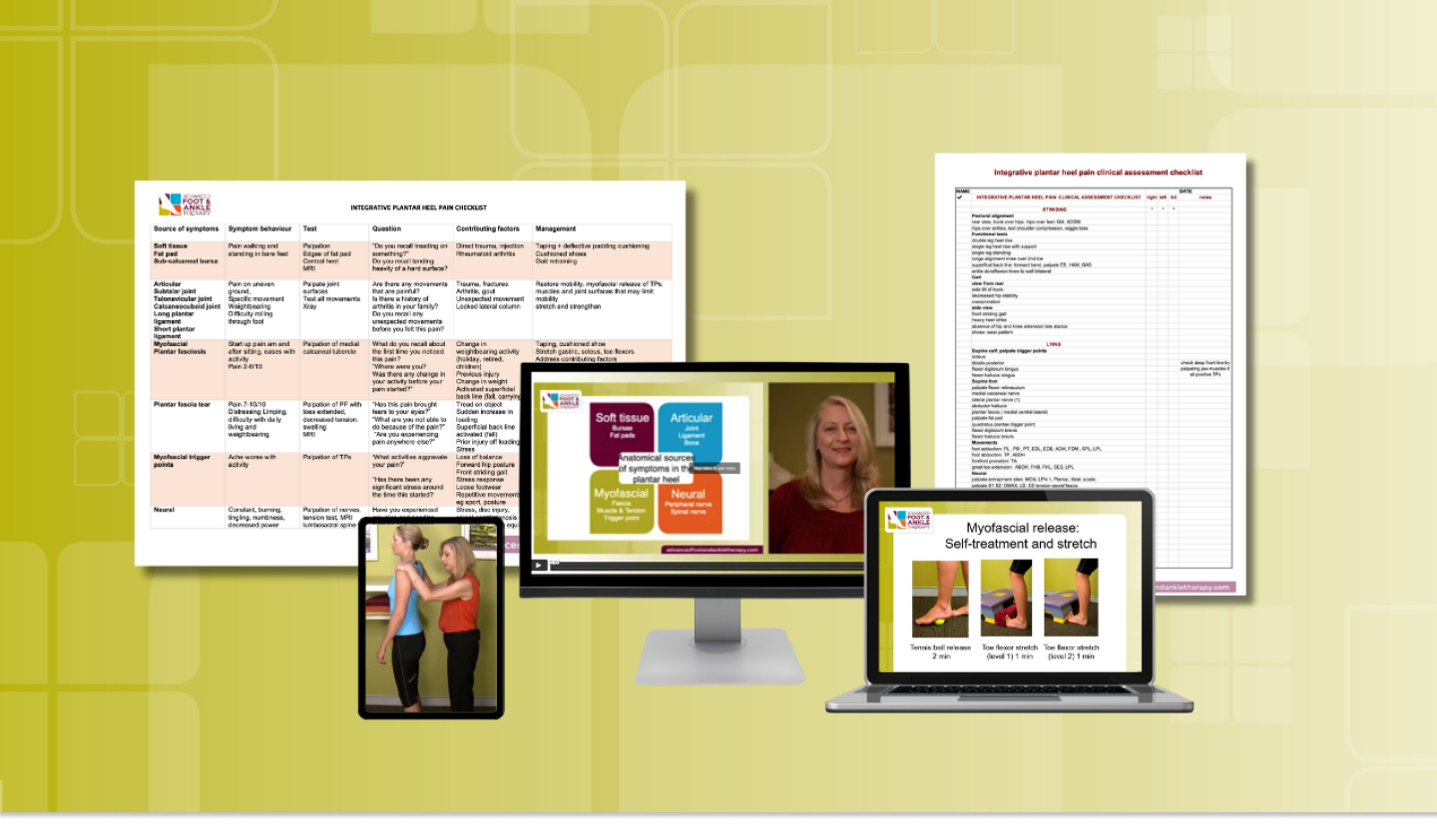Current Status
Price
Get Started

“Bring faster and more complete relief to your patients.”
– Physiotherapist and Clinical Educator Robyn Gant
Transform your approach to plantar heel pain
Resolve Complex Plantar Heel
Pain With Innovative
Professional Training For
Allied Health Practitioners
Discover breakthrough integrative techniques
from a leader in foot & ankle physiotherapy
with over 35 years of experience
This course is suitable for Physiotherapists,
Podiatrists, Osteopaths, and Chiropractors.
An Integrative Approach to Foot & Ankle Therapy
Are you tired of treating plantar heel pain without seeing lasting results for your clients?
You’re not alone. Many practitioners share this frustration.
That’s because the traditional approach taught at university often treats symptoms without addressing the root cause of foot pain.
The foot is complex, and knowing what’s happening in the local area is challenging without learning the integrative anatomy and how it impacts the rest of the body.
But if we think about it this way…
The feet are the body’s foundation, much like the base of a sculpture, supporting
everything above them. If something goes wrong in the foot or above it can create
widespread dysfunction elsewhere in the body.
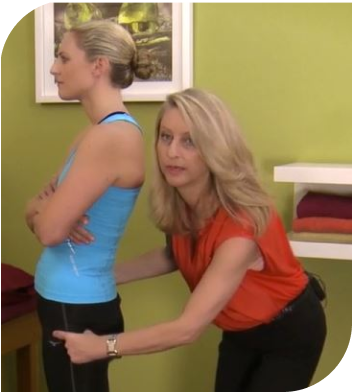
For example, if your client has an injury, carries their children on their hip, or has other imbalances elsewhere in the body, it can directly impact the feet and cause chronic pain.
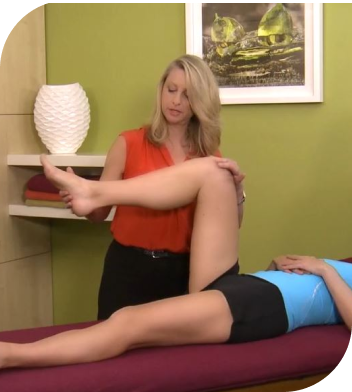
It’s a two-way street when it comes to foot pain.
The solution lies in an innovative approach that considers the whole body in our treatment plans – not just the foot or ankle.
In my many years of experience as a physiotherapist, I’ve encountered countless cases of plantar heel pain where conventional treatments fell short.
That’s why I’ve dedicated myself to developing a program that goes beyond treating symptoms – and instead focuses on truly resolving the underlying issues that caused the foot pain.
Foot injuries can be debilitating and disabling for our clients, and I know you want to ensure they’ve resolved their problems for good. I can teach you how to achieve that and get them back to doing what they love.

Paula Luke,
Physiotherapist
“Working as a senior physiotherapist with Robyn, what stood out to me was her generosity in sharing her time and detailed knowledge of anatomy. This helped me to really feel the soft tissues, to identify the many structures that may be contributing to the problem, especially nerve entrapments. Her ability to ask her clients the right questions, and her problem-solving approach opened my eyes, and enabled me to achieve a dramatic increase in my success rate from 40% to 90% in my treatment of foot and ankle injuries. I now feel confident I can tackle anything that comes through my door.”
“Robyn was instrumental in my learning and understanding of complex foot and ankle injuries. Her curious and caring nature has enabled her to not only to explore and understand the complexities of treating foot and ankle injuries but also the patience and insight to teach her tried and true methods to others. Her drive for ongoing learning is outstanding and her genuine interest in her clients and student’s well-being and understanding is truly appreciated. Robyn sharing her vast experience with the world through her course is a tremendous gift to the health care community.”

Ali Gibson,
Physiotherapist & Podiatrist

Ali Gibson,
Physiotherapist & Podiatrist
“Robyn was instrumental in my learning and understanding of complex foot and ankle injuries. Her curious and caring nature has enabled her to not only to explore and understand the complexities of treating foot and ankle injuries but also the patience and insight to teach her tried and true methods to others. Her drive for ongoing learning is outstanding and her genuine interest in her clients and student’s well-being and understanding is truly appreciated. Robyn sharing her vast experience with the world through her course is a tremendous gift to the health care community.”
Vertical and Lateral Thinking: Becoming a Foot
Pain “Detective”
Advanced Understanding of Foot Anatomy For Both Experienced and
Newly-Qualified Practitioners
Many practitioners make three critical mistakes when addressing plantar heel pain. They:
- 1
- 2
- 3
Assume It’s the plantar fascia and provide a recipe approach to treatment
Don’t know how to assess and restore foot mobility
Don’t look for contributing factors outside the foot
- 1
Assume It’s the plantar fascia and provide a recipe approach to treatment
- 2
Don’t know how to assess and restore foot mobility
- 3
Don’t look for contributing factors outside the foot
Learning what to think, ask, assess, and do differently to help clients resolve chronic plantar heel pain has transformed my practice and formed the foundation of my teachings.
This program stands apart from others in terms of plantar heel pain. It will enhance your knowledge and expertise, whether a new or experienced practitioner, empowering you to resolve plantar heel pain effectively.
You’ll gain valuable new tools for your professional toolkit.
The treatments you’ll learn are backed by research and clinical experience, proven to deliver results.
You’ll cover everything from assessment techniques to advanced treatment modalities, ensuring you have the skills and knowledge to tackle even the most complex cases of plantar heel pain.
I always tell my students to “think like a detective to discover what others may have missed.”
That’s why you’ll learn a systematic process to discover all possible anatomical sources of symptoms and contributing factors and how to treat them using manual therapy techniques and exercise with a tailored and strategic treatment plan for each client.
Imagine A Program That Enhances
Your Treatment Approach:
-
Helps you identify what’s missing in your current approach and how to manage it effectively: Gain insights into gaps in
your current methods and learn strategies to address them, enhancing your overall treatment effectiveness. -
Provides a systematic process to discover the various anatomical sources of symptoms: Learn a straightforward, step-
by-step method to identify all potential causes of symptoms, ensuring a thorough assessment for better treatment
outcomes. -
Enables you to understand the unique how and why of each individual’s injury: Understand the specific factors
contributing to each client’s injury, allowing you to create personalised and effective treatment plans tailored to their
unique needs.
-
Helps you identify what’s missing in your current approach and how to manage it effectively: Gain insights into gaps in
your current methods and learn strategies to address them, enhancing your overall treatment effectiveness. -
Provides a systematic process to discover the various anatomical sources of symptoms: Learn a straightforward, step-
by-step method to identify all potential causes of symptoms, ensuring a thorough assessment for better treatment
outcomes. -
Enables you to understand the unique how and why of each individual’s injury: Understand the specific factors
contributing to each client’s injury, allowing you to create personalised and effective treatment plans tailored to their
unique needs.
“To solve a problem, you need to understand its complexity. An advanced therapist must be an excellent anatomist, lateral thinker, and an inspired coach.”
-– Robyn Gant
Meet Your Mentor, Robyn Gant
Leader in Foot & Ankle Physiotherapy with Over 35 Years of Experience

Hi, I’m Robyn Gant, a Physiotherapist and Clinical Educator from Sydney, Australia.
I’m passionate about helping patients and practitioners overcome even the most complex foot and ankle injuries.
With a Master’s Degree in three-dimensional foot and ankle movement, I’ve spoken at conferences, led clinical workshops, trained Physiotherapists, and collaborated with Foot and Ankle Orthopedic Surgeons, Podiatrists, and Osteopaths to teach my advanced methods for solving foot and ankle pain.
My programs combine the art and science of advanced practice. The art lies in communicating and working with the body to improve function and relieve pain. The science is in the research, techniques and knowledge I’ve gathered over my career.
This program is the culmination of the lessons that have transformed my practice.

Ben Behan,
Physiotherapist
Adelaide, Australia
“Understanding that plantar heel pain can have multiple sources of pain, which should all be treated differently, has changed my assessment of plantar heel pain. The detailed anatomical information and assessment have helped me understand the different symptoms and management needed for a successful outcome. This course should be recommended due to the amount of detail that is provided in each section. It builds a comprehensive understanding of plantar heel pain that is not provided at the university level.”
“Robyn’s checklist and troubleshooting guide are incredible tools for unpacking the confusion around what structures are implicated in producing plantar heel pain. I found identifying and releasing a locked lateral column incredibly useful. The more long-standing cases of intractable pain were able to be resolved by using the logical structure of Robyn’s assessment and treatment. This course doesn’t go for quick fixes but interrogates the causes of pain and provides logically determined and easily applied treatments to solve issues. I now have more confidence to diagnose the problem.”

Patrick Fitzgerald
Physiotherapist
Adelaide, Australia

Patrick Fitzgerald
Physiotherapist
Adelaide, Australia
“Robyn’s checklist and troubleshooting guide are incredible tools for unpacking the confusion around what structures are implicated in producing plantar heel pain. I found identifying and releasing a locked lateral column incredibly useful. The more long-standing cases of intractable pain were able to be resolved by using the logical structure of Robyn’s assessment and treatment. This course doesn’t go for quick fixes but interrogates the causes of pain and provides logically determined and easily applied treatments to solve issues. I now have more confidence to diagnose the problem.”
INTRODUCING…
Resolve Complex Plantar Heel Pain: Advanced
Training For Allied Health Professionals
A Six Week Online Program Designed to Turn You into a Master of Complex Plantar Heel Pain
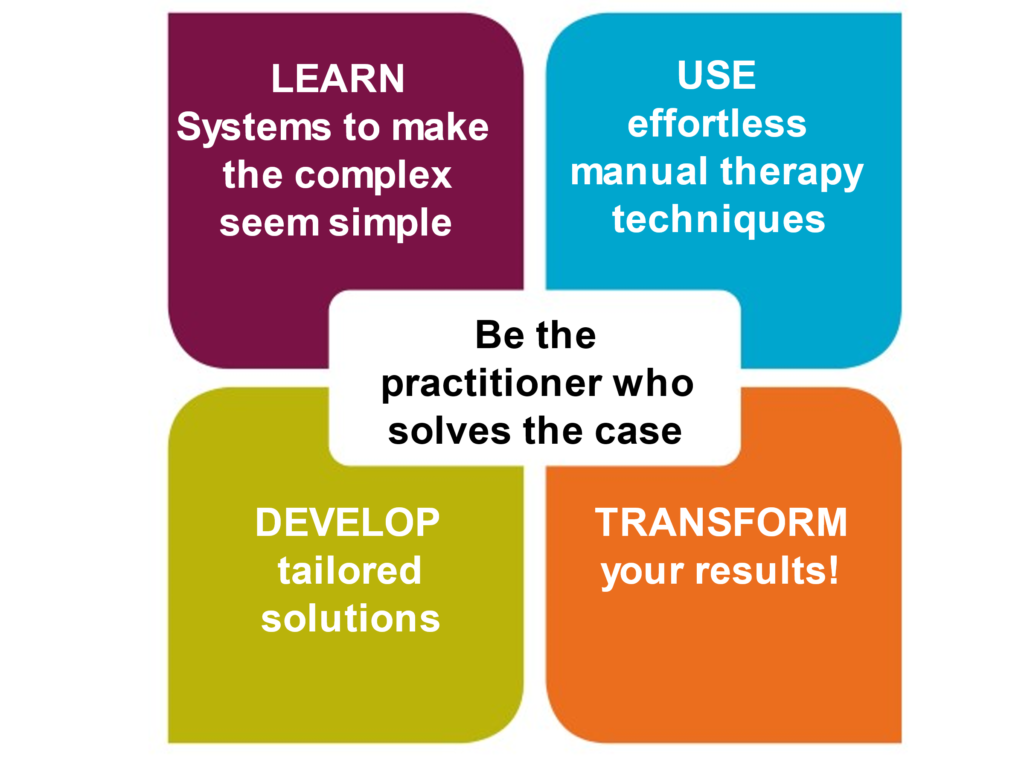
This online program is rich with video demonstrations, exercise sheets, practicals, and clinic resources.
By the end of our time together, you’ll have learned an innovative process to assess the foot and ankle, identify symptoms, and create a multimodal treatment that will effectively treat even the most complex cases of plantar heel pain.
Plus, you’ll be connected with other Allied Health Practitioners, including Physiotherapists, Podiatrists, Osteopaths and Chiropractors.
Course delivery:
- 1
Six weeks: Paced so you can assimilate the training materials.
- 2
Six modules: Get lifetime access to all six modules, as well as pre-recorded videos, worksheets, checklists, and resources.
- 3
Three live Q&A sessions: Expand your knowledge and get direct feedback from me on how to use what you’ve learned in the modules in practice.
- 4
Share insights and experiences: Learn from the diverse perspectives of your peers.
- 5
Develop a multidisciplinary approach: Enhance your treatment plans with input from various specialties.
- 6
Build lasting professional relationships: Create a support network beyond the program.
INSIDE THE PROGRAM…
Module 1
Mindset
Communication &
Thinking
Resolve Complex Plantar Heel Pain: Advanced Training For Allied Health
Professionals
This segment will introduce you to the latest evidence-based techniques and innovative foot and ankle therapy approaches, equipping you with the expertise necessary to address complex cases.
You’ll learn advanced assessment methods, differential diagnosis, and specialised treatment modalities.
The goal is to deepen your understanding of integrated anatomy, biomechanics, and pathology related to foot and ankle conditions, enabling you to provide high-quality, targeted interventions that lead to more effective outcomes for your clients.
Examine the impact of stress on therapeutic interactions and its effects on
clients' foot and ankle pain, including how stress can exacerbate symptoms
and influence treatment outcomes:
This section will delve into the psychological and physiological effects of stress on clients and therapists. You’ll learn how stress can contribute to muscle tension, nerve irritation, and overall health, potentially worsening foot pain symptoms.
We’ll discuss strategies for creating a calming therapeutic environment and effective communication techniques to help clients manage their stress levels. By understanding this dynamic, you can improve your therapeutic interactions and tailor your treatment plans to address physical and emotional factors affecting your client’s recovery.
Enhance vertical and lateral thinking skills to tackle challenging cases with
a broader perspective, helping you develop innovative solutions and
improve client outcomes:
In this part of the program, you’ll cultivate your vertical and lateral thinking abilities, enabling you to analyse problems more creatively and effectively.
Vertical thinking involves logical, step-by-step analysis, while lateral thinking encourages thinking outside the box. You’ll engage in case studies and problem-solving exercises that challenge you to consider multiple perspectives and potential solutions.
By enhancing these skills, you’ll be better equipped to address complex cases, identify root causes of pain, and implement innovative treatment strategies that improve client outcomes.
Module 2
Work Smarter,
Not Harder with
Manual Therapy
Explore the manual therapy framework for success, focusing on strategies
to work smarter, not harder, in foot and ankle therapy while protecting your
greatest asset—your hands.
In this section, you will learn about the manual therapy framework designed to maximise effectiveness while minimising physical strain on your body. Implementing efficient techniques and approaches can improve client outcomes without compromising your health. Working smarter, not harder, helps you prevent injury and fatigue, ensuring you can provide quality care throughout your career.
Discover the benefits of using low-level laser therapy, a valuable tool that
can enhance treatment outcomes and efficiency:
Low-level laser therapy (LLLT) is a non-invasive treatment option that utilises specific wavelengths of light to stimulate healing at the cellular level. You’ll explore how LLLT can help deliver painless treatment to treat myofascial trigger points and nerve irritation to alleviate pain. This tool can be easily integrated into your practice, allowing for faster client recovery times and improved treatment efficiency, making it an essential addition to your therapy toolkit.
Learn how to perform effortless, fast, and effective myofascial release
and joint mobilisation techniques to improve client care and results:
In this part of the program, you will master myofascial release and joint mobilisation techniques that require minimal effort yet yield significant results. These hands-on methods are designed to release muscular and fascial tension and improve joint function, enhancing overall mobility and reducing pain for your clients. By incorporating these techniques into your practice, you can provide effective treatment that addresses the underlying issues of foot and ankle pain, ultimately improving client satisfaction and outcomes.
Module 3
Expanding Your
Vertical
Checklist
Developing Expertise in Vertical Thinking:
As your expertise grows, you’ll build a comprehensive checklist of potential anatomical sources of symptoms. This checklist enhances your ability to identify many factors that may co-exist with foot and ankle injuries.
In this module, you’ll discover the theory and practice of “becoming a foot pain detective”.
Understanding the "WHAT" of an Injury:
Discover the “WHAT” of an injury, including anatomical structures that can be painful to touch or can refer pain to the plantar heel.
These structures include local and remote:
- Soft Tissues: These may include retinacula, bursae, and aponeuroses, which can be strained, inflamed, or torn.
- Muscles: Specific local and remote muscle groups that can refer pain to pain in the plantar heel.
- Bones: Potential issues like fractures or stress reactions in the foot bones.
- Joints: Joint dysfunctions or inflammation that may lead to referred pain.
- Nerves: Nerve entrapments or irritations that can cause intense pain, tingling, or numbness in the plantar heel.
Learn my assessment secrets:
You might be surprised by the number of items on my checklist that have helped me identify and resolve my clients’ plantar heel pain. Each item represents a potential source of discomfort that can easily be overlooked.
You’ll get access to my 23-point checklist for getting to the bottom of your client’s pain.
Modules 4
and 5
Clinical Tests,
Lateral Thinking,
and Tailored
Solutions
Explore soft tissue and articular sources of symptoms:
This section identifies specific soft tissue structures and joints that may contribute to a client’s symptoms. Understanding these sources helps in accurately diagnosing and developing effective treatment plans.
Learn clinical tests to assess symptoms:
You will discover various clinical tests designed to evaluate the function of soft tissues and joints. These tests will provide valuable information that aids in pinpointing the cause of pain and guides your treatment approach.
Use discovery questions to gather client information:
Engage with the client’s story to dig deeper through targeted questions that help uncover essential details about their symptoms, lifestyle, and medical history. This information can provide insights that lead to more effective and personalised treatment plans.
Apply lateral thinking to develop tailored solutions:
Enhance your problem-solving skills by using lateral thinking techniques. This approach encourages creative and unconventional thinking to explore multiple perspectives and potential solutions for complex cases.
Understand the HOW and WHY of an injury:
Delve into the mechanisms behind an injury to grasp “HOW” it occurred and “WHY” it causes specific symptoms. This understanding is essential for creating targeted interventions and improving client outcomes.
Recognise individual contributing factors:
Acknowledge that each client has unique factors influencing their condition, such as their lifestyle, activities, and medical history. Tailoring your approach to these individual factors is crucial for effective treatment.
Gain critical insights for both the client and therapist:
Developing a thorough understanding of the sources of symptoms and the context of each client’s situation is vital. This insight fosters better communication, enhances the therapeutic relationship, and empowers clients in their recovery journey.
Explore myofascial and neural sources of symptoms:
This section focuses on identifying the role of myofascial and neural pathways in producing symptoms. Understanding these sources helps in accurately diagnosing the origin of pain and discomfort.
Learn clinical tests to assess myofascial and neural function:
You’ll discover various clinical tests designed to evaluate the condition of myofascial tissues and neural structures. These assessments provide valuable information about the functioning of these systems and guide effective treatment strategies.
Module 6
The “Integrative
Clinic Assessment
Checklist” and
the “Ultimate
Troubleshooting
Guide”
Integrating research and guidelines into practice:
In this module, we will explore how to apply the latest research and clinical guidelines related to plantar heel pain in your practice. Understanding the limitations of guidelines helps you expand your treatment options to tailor treatment to the individual.
Utilise multimodal treatment approaches:
Learn about multimodal treatment strategies that combine various therapeutic methods to address plantar heel pain comprehensively. This approach may include manual therapy, exercise, modalities, and patient education, providing a well-rounded treatment plan.
Complete the integrative plantar heel pain clinical assessment checklist:
We will finalise our clinical assessment checklist, which helps identify contributing factors to plantar heel pain within the closed kinetic chain (the interconnected system of joints and muscles). This checklist enables you to perform a thorough assessment efficiently.
Perform assessments efficiently in 30 minutes:
With practice, you can conduct this comprehensive assessment in about 30 minutes. This streamlined process ensures you can gather vital information quickly while maintaining thorough evaluation.
Review two challenging case histories:
I’ll present two case histories of clients with complex plantar heel pain successfully treated using multimodal strategies. We will analyse these cases to understand the treatment planning and decision-making involved.
Consolidate the Integrative Clinical Assessment Checklist:
We’ll integrate all the knowledge gained throughout the modules into our final checklist, allowing for a complete and efficient management plan for plantar heel pain.
Create the Ultimate Troubleshooting Guide:
My Ultimate Troubleshooting Guide compiles all essential discovery questions, assessment and treatment strategies for plantar heel pain. This resource will serve as a valuable tool for addressing challenges in your practice.
Discover valuable insights:
You will be amazed by the new insights and strategies you will uncover in this module, equipping you to effectively manage plantar heel pain and improve client outcomes.
Learn clinical tests to assess myofascial and neural function:
You’ll discover various clinical tests designed to evaluate the condition of myofascial tissues and neural structures. These assessments provide valuable information about the functioning of these systems and guide effective treatment strategies.
PLUS THESE
DOWNLOADABLE
RESOURCES:
Recap of What You’ll Learn Inside Resolve
Complex Plantar Heel Pain
-
Learn fast and simple strategies to manage the impact of stress on the body
Discover practical techniques for reducing stress and its effects on the body, helping improve overall well-being. -
Identify and treat myofascial trigger points painlessly
Master methods for locating and addressing myofascial trigger points without causing discomfort, leading to effective
pain relief. -
Expand your vertical checklist of possible sources of symptoms and learn how to treat them
Build a comprehensive checklist of potential symptom sources and gain insights into effective treatment strategies for each. -
Dig deeper with discovery questions to uncover clues others might miss
Use targeted discovery questions to gather crucial information that may reveal underlying issues and help diagnose and treat accurately. -
Apply lateral thinking to understand why an injury occurred and create tailored solutions
Use creative problem-solving techniques to explore the root causes of injuries and develop customised treatment plans based on individual needs. -
Access professional exercise sheets, handouts, and charts
Benefit from various resources to support your practice, including exercise sheets, informative handouts, and detailed charts. -
See how two complex cases were resolved
Review detailed case studies to understand how complex cases were effectively managed and resolved, providing practical insights for your practice. -
Integrate your learning with the “Integrative Clinical Checklist” and “Ultimate Troubleshooting Guide”
Pull together all your knowledge using these comprehensive tools to streamline your clinical practice and enhance problem-solving skills. -
Get your questions answered and discuss new concepts in Q&A sessions
Participate in Q&A sessions to address your questions, explore new ideas, and engage in discussions that deepen your understanding and application of the concepts.
-
Learn fast and simple strategies to manage the impact of stress on the body
Discover practical techniques for reducing stress and its effects on the body, helping improve overall well-being. -
Identify and treat myofascial trigger points painlessly
Master methods for locating and addressing myofascial trigger points without causing discomfort, leading to effective
pain relief. -
Expand your vertical checklist of possible sources of symptoms and learn how to treat them
Build a comprehensive checklist of potential symptom sources and gain insights into effective treatment strategies for each. -
Dig deeper with discovery questions to uncover clues others might miss
Use targeted discovery questions to gather crucial information that may reveal underlying issues and help diagnose and treat accurately. -
Apply lateral thinking to understand why an injury occurred and create tailored solutions
Use creative problem-solving techniques to explore the root causes of injuries and develop customised treatment plans based on individual needs. -
Access professional exercise sheets, handouts, and charts
Benefit from various resources to support your practice, including exercise sheets, informative handouts, and detailed charts. -
See how two complex cases were resolved
Review detailed case studies to understand how complex cases were effectively managed and resolved, providing practical insights for your practice. -
Integrate your learning with the “Integrative Clinical Checklist” and “Ultimate Troubleshooting Guide”
Pull together all your knowledge using these comprehensive tools to streamline your clinical practice and enhance problem-solving skills. -
Get your questions answered and discuss new concepts in Q&A sessions
Participate in Q&A sessions to address your questions, explore new ideas, and engage in discussions that deepen your understanding and application of the concepts.
This course is ideally suited to
therapists who are:
- open to learning different ways of thinking
- prepared to reflect on their ideas and processes
- hungry for new ideas and knowledge
- want to know the anatomical detail that makes all the difference to the outcome
- prepared to look outside the foot and ankle for the solution
- patient, life-long and self-directed learners
BACKED BY MY “TRY BEFORE YOU BUY” SATISFACTION GUARANTEE…
I’m confident this program will transform how you treat complex plantar heel pain, so I’m inviting you to try my course:
Work Smarter, Not Harder With Manual Therapy For The Foot & Ankle, Save Your Hands, and Transform Your Results!
With my zero-risk “Try Before You Buy” guarantee, you can access my course to ensure it is right for you.

This 3.5-hour course is a pre-requisite for the “Resolve Complex Plantar Heel Pain” course and provides real-time video demonstrations of a case study.
You’ll learn:
- How to protect your most valuable asset, your hands.
- How to identify and restore three critical movements for foot function.
- How to work effortlessly and painlessly with the wonders of Low-Level Laser Therapy (LLLT)
- How to identify and treat a commonly missed saphenous nerve irritation
This course is available for you to download at www.afaat.com.au
If you enjoyed my course, you’ll love “Resolve Complex Plantar Heel Pain.”
LIMITED SPACES AVAILABLE – ENROL TODAY
Resolve Complex Plantar Heel Pain With Innovative Training For Allied
Health Practitioners
This course is suitable for Physiotherapists, Podiatrists, Osteopaths and
Chiropractors.
What’s Included:
- Lifetime access to all six modules
- Downloadable videos, worksheets, charts, and diagrams
- Integrative Client Checklist and My Ultimate Troubleshooting Guide
- Three live group Q&A mentoring sessions via Zoom
- Priority email support throughout the program
Please note: To ensure an in-depth learning experience, enrolment is limited to 12
practitioners per course.

Elise Bruurs,
Physiotherapist,
Netherlands
“Recognising the many sources of symptoms in plantar heel pain helped me achieve more structure in my assessment and treatment options to connect the dots. The Q&A sessions were great and well-spaced throughout the course. With this structure, I feel more confident that I can provide a thorough assessment both in and outside the foot. I hope that this training will be followed by practitioners all over the world.”
Frequently Asked Questions
I’ve designed this program for Allied Healthcare Practitioners who have already completed my previous training: Work Smarter, Not Harder, with Manual Therapy for The Foot and Ankle, Save Your Hands, and Transform Your Results!
This program, Resolve Complex Plantar Heel Pain, builds on the practices in the first program for a truly holistic approach to mastering foot and ankle pain.
Yes, the course will be run at a later date. Make sure you have downloaded my free course from the website so that you are on our mailing list. You will be notified when the Plantar Heel Pain course is available. You can download the free course from www.afaat.com.au.
Yes you will receive a Certificate of Completion containing CDP points.
As we work in small groups, we try to find a suitable time for everyone. If you can’t make a Q&A session, you can email your question to be answered in the recorded session.
Know if “Resolve Complex Plantar Heel Pain” is
the right program for you…
- You’ve completed my first program in this series: Work Smarter, Not Harder With Manual Therapy and Exercise for the Foot and Ankle, Save Your Hands, and Transform Your Results!
- As an Allied Health practitioner – whether a physiotherapist, podiatrist, osteopath or chiropractor– you’re eager to enhance your assessment and treatment of plantar heel pain.
- You approach your work diligently and are committed to achieving the best outcome for your clients.
- You’re open to exploring new ideas and ready to apply what you’ve learned in your professional practice.
- You aspire to become a respected expert in foot health within your local network.
Resolve Complex Plantar Heel Pain is the right program for you if you resonate with the statements above. As an Allied Health Practitioner, you choose your educational path. By filling gaps in your knowledge, you can improve your skills and deliver better results for your clients.
If you have any questions before enrolling, I invite you to email me at [email protected] to schedule a 20-minute call.
Please note: To ensure an in-depth learning experience, enrolment is limited to 12
practitioners per course.
